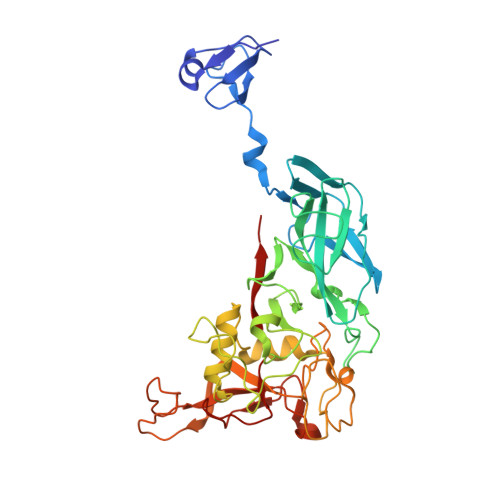The C-type lectin fold as an evolutionary solution for massive sequence variation
McMahon, S.A., Miller, J.L., Lawton, J.A., Kerkow, D.E., Hodes, A., Marti-Renom, M.A., Doulatov, S., Narayanan, E., Sali, A., Miller, J.F., Ghosh, P.(2005) Nat Struct Mol Biol 12: 886-892
- PubMed: 16170324
- DOI: https://doi.org/10.1038/nsmb992
- Primary Citation of Related Structures:
1YU0, 1YU1, 1YU2, 1YU3, 1YU4 - PubMed Abstract:
Only few instances are known of protein folds that tolerate massive sequence variation for the sake of binding diversity. The most extensively characterized is the immunoglobulin fold. We now add to this the C-type lectin (CLec) fold, as found in the major tropism determinant (Mtd), a retroelement-encoded receptor-binding protein of Bordetella bacteriophage. Variation in Mtd, with its approximately 10(13) possible sequences, enables phage adaptation to Bordetella spp. Mtd is an intertwined, pyramid-shaped trimer, with variable residues organized by its CLec fold into discrete receptor-binding sites. The CLec fold provides a highly static scaffold for combinatorial display of variable residues, probably reflecting a different evolutionary solution for balancing diversity against stability from that in the immunoglobulin fold. Mtd variants are biased toward the receptor pertactin, and there is evidence that the CLec fold is used broadly for sequence variation by related retroelements.
- Department of Chemistry & Biochemistry, University of California at San Diego, La Jolla, California 92093, USA.
Organizational Affiliation:

















